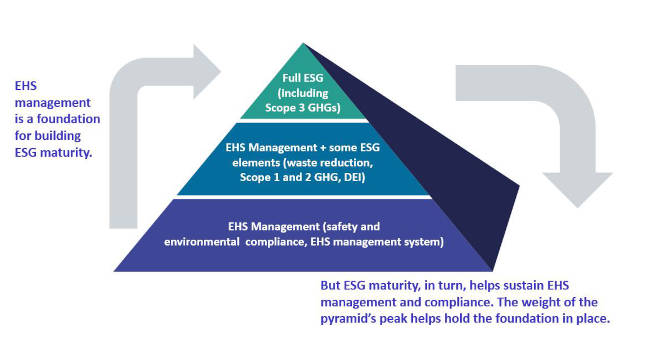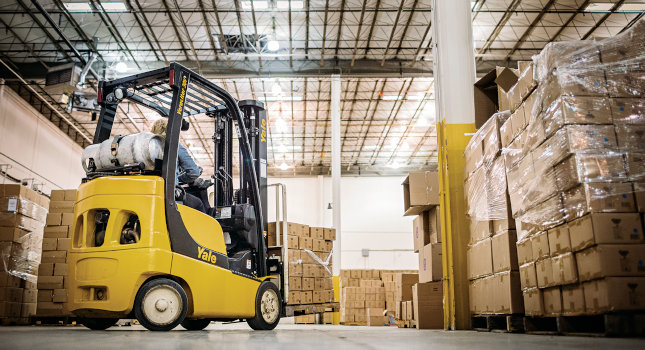COVID-19 has impacted the way food plant facilities are being built from restrooms to automation and worker satisfaction and overall safety.

The COVID-19 pandemic brought a number of immediate and temporary changes to daily life: reduced occupancy limits, partitions, social distancing, one-way stairwells and more.
While these short-term adaptations were necessary to mitigate the spread of the virus, will the pandemic change the way facilities are built in the long term? The likely answer is, not dramatically.
However, it is shaping the way we think about designing these spaces. Let’s look at some examples of trends we may see in the post-COVID era.
1. Labyrinth-style restroom design
You’ve likely seen a labyrinth-style restroom configuration in a high-traffic area such as an airport or amusement park. This layout eliminates doors without allowing anyone to see into the restroom by using an adjacent hallway or “maze-like” entryway. The labyrinth design is intended to minimize germ transmission and make restrooms more secure spaces, but the layout often requires a larger building footprint.
That said, doorless restrooms also have other advantages. While outward-swinging doors allow public restroom users to push them open without touching them, going doorless eliminates the need to touch the door entirely as well as the risk of hitting people on the other side. Plus, with no doors to close and sound carrying further, there is less incentive to commit a crime. Some owners have even considered digital counters to display the number of people in a restroom at a given time in order to accommodate potential social distancing in the future.
With heightened attention around public health over the past year, restroom design is increasingly a common consideration for facility owners for multiple reasons.
2. Rethinking the drinking fountain
Public water fountains were practically obsolete during the height of the COVID-19 pandemic, with most turned off according to public health guidance. However, plumbing code still requires access to a certain minimum of water fountains for many public spaces. That’s gotten a lot more people rethinking the traditional approach to the drinking fountain.
Of course, we’ve seen the growth of bottle-filling stations as one alternative, though these aren’t always feasible in certain areas of a food plant where bottles can’t be left behind. Touchless drinking fountains operated by a sensor or foot pedal are another option. Moving forward, it is likely we will see more innovative water fountain solutions and fewer of the traditional types.
3. Break rooms
If there’s a need for social distancing in the future, whether it’s a coronavirus variant or anything else, essential spaces like break rooms and kitchens can easily become bottlenecks. Basically, the options are:
- A bigger space
- Fewer tables
- Staggered break/lunch shifts
- Some combination of the three.
While dividers were a quick fix, they’re not ideal in the long term. In addition, the amount of cleaning and sanitizing these spaces have endured may influence owners to select more durable and cleanable materials in the future.
Like many decisions in a project, it ultimately comes down to cost and the space available. Nonetheless, the experience of the past year has owners thinking twice about the design of their break rooms, plant entries and other common spaces.
4. Automation, AI and IIoT tools
The use of automation, robotics, artificial intelligence (AI) and Industrial Internet of Things (IIoT) tools is nothing new, but the recent volatility of the supply chain and labor market only further underscores the important role of technology in the food industry. While some plants are moving forward with previously planned automation upgrades, others are now looking at automation and technology options for the first time in the wake of the pandemic.
There is no question more food plants and warehouses are looking for ways to best take advantage of advancing automation technology. One example is use of automated guided vehicles (AGVs) in lieu of driver-operated forklifts.
5. Health and temperature checks
The use of gloves, masks and eyewear by dentists wasn’t the norm until the Centers for Disease Control and Prevention (CDC) introduced universal precautions in 1985, mostly in response to the HIV epidemic. Similarly, temperature checks and other health screenings may now become more common, especially in sensitive locations like a food processing plant.
In particular, automatic body temperature scanners could grow in popularity even after COVID-19 has long been in our rearview mirror. After all, knowing whether an employee or visitor has a fever before entering a food-safe environment (or any other type of populated facility) is important information, pandemic or not. In fact, we’ve already had at least one client specify a body temperature scanner in the lobby for anyone who enters their new facility.
6. Prioritizing employee welfare
Keeping employees healthier and happier is a growing trend in general, especially in food processing, cold storage, trucking and other industries that often have rigorous work conditions and high turnover rates. The post-pandemic job market only exacerbated the labor shortage issue while highlighting the critical value of these essential food supply chain workers.
Therefore, owners are placing more emphasis on employee welfare spaces, from increased natural lighting in break areas to on-site amenities for comfort and entertainment, and it’s likely we’ll see that continue as employers look to attract — and retain — a stable workforce.
This article originally appeared on Stellar’s Food For Thought Blog. Stellar is a CFE Media content partner.



